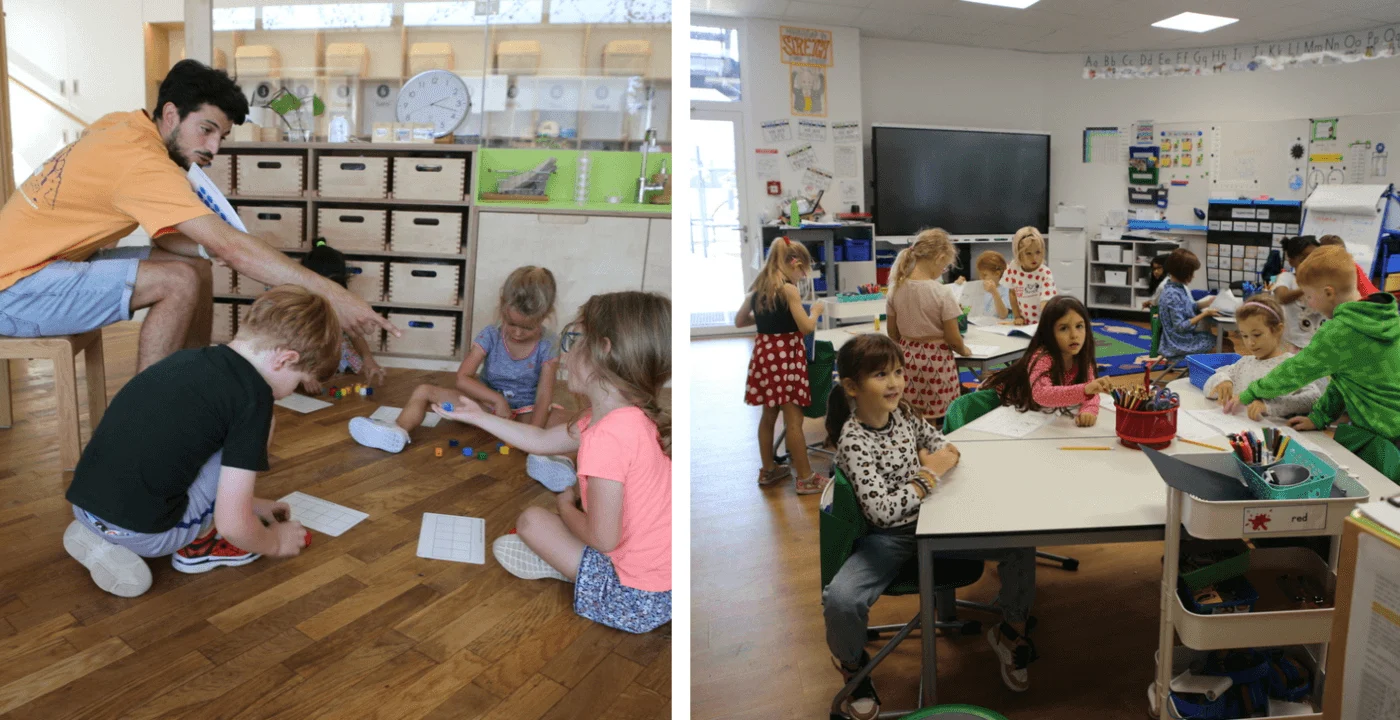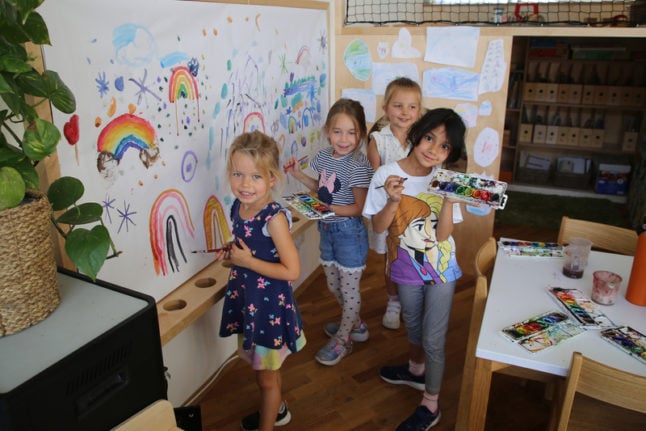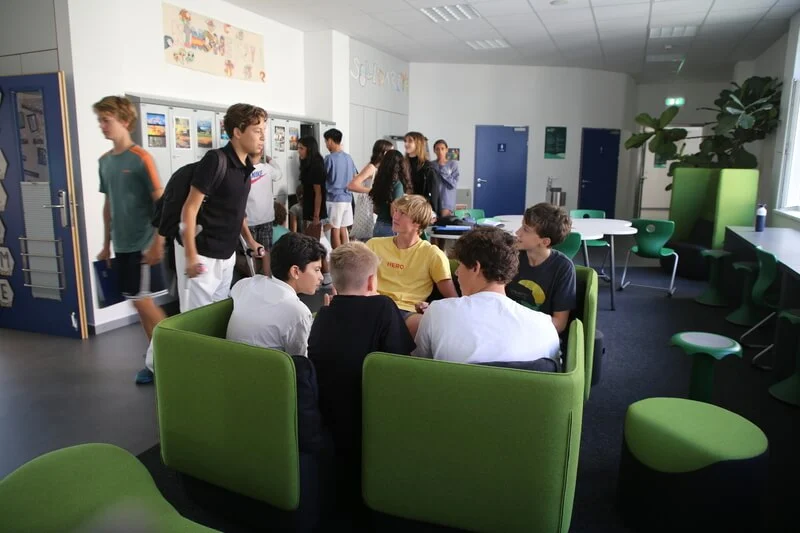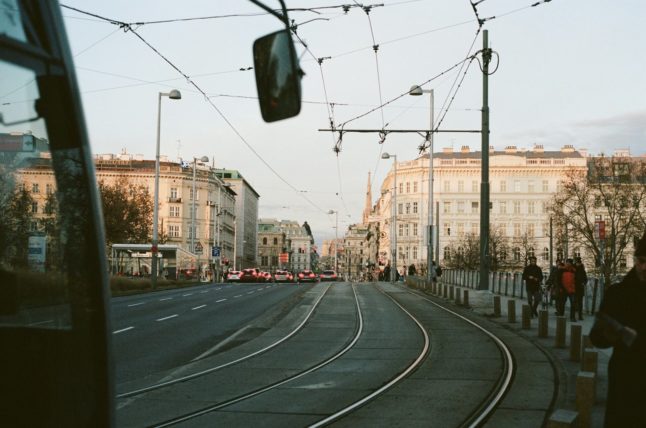Throughout the school, learning environments have been transformed and students are discovering brand new ways in which to learn. We take in a tour of some of the new additions to AIS Vienna’s facilities, through the course of a school day, to discover how this is happening.
Creating worlds of wonder
It’s shortly after eight thirty in the morning, and in the Early Childhood Discovery Garden, children have taken their learning outside and are conducting simple science experiments in the morning sunshine. Using spades and buckets, they dig a trench through which water will flow, mimicking the course of a river.
As they discover how water makes its way from rain and snow, down from mountain highlands and ending in the sea, they’re improving their fine motor skills and developing physical coordination. Every element of the new Discovery Garden is designed for learning through play, an idea supported bv leading educational thinkers such as Jean Piaget.
It’s a space that blurs the lines between the classroom and the playground, and as students play during breaks, teaching staff are able to find teaching moments among the laughter and sounds of activity.
In the words of the Early Childhood team: “We are excited to use this outdoor area and understand that this space can be more than just recreation. It’s built for dynamic learning, cultivating our curious explorers, and stimulating their physical, cognitive, and social growth.”

Classrooms that calm
Just past eleven o’clock and in the Kindergarten area, the idea of constant learning, and a seamless transition between play and learning is carried through in the redesign of the area. New flooring, the restructuring of areas and the use of wooden fixings and furniture create a sense of warmth and familiarity for the young learners.
This is no simple aesthetic choice: The use of wood and other natural materials in building and outfitting classrooms has been shown in a growing number of studies to lead to a tangible reduction in stress and better outcomes. Creating a calming, soothing atmosphere at these critical points in a child’s education is setting them up for success in years to come.
Over in the Grade 2 area, a refurbishment has also taken place. As students work on a group activity, and teachers move around the room, there is better storage and integration of technology into the room. While more resembling traditional classrooms than the Early Childhood area, the Grade 2 area is still full of pictures, drawings and other outstanding examples of student work, inspiring pride in students and visiting parents.
New temperature regulation has been installed throughout the area, ensuring that even in the coldest winters and hottest summers, classrooms across AISV are comfortable and optimised for focus and learning.
Grade 2 teachers are thrilled with the new classrooms. As Megan Lynch one of the teaching team tells The Local: “I’m so thankful for our recently renovated classroom and I can observe the positive impact it is having on my students’ learning journey.”
“Visually, the classroom exudes a more soothing and inviting environment. It has ample storage and organized spaces, to maintain all our materials neatly. In addition, there is more space for flexible seating choices and small group spaces.
“I feel that the new classroom has led to my students feeling calmer, having a bigger sense of pride, and increased enthusiasm for their learning.”
A space of their own
Not long after two in the afternoon, students have moved on to afternoon classes. In the new Grade 8 Middle School Common Area, a group of students are using the space to prepare a presentation for English class that involves a roleplay element, exploring the themes and ideas present in one of their set texts.
While some students work on a notebook, others have arranged tables and chairs to simulate the set of a TV chat show, from where they will take on the role of characters in the novel they are studying. Being able to rearrange and customise the area gives students the chance to extend their learning and break free of traditional models of simply listening to instruction. With greater opportunity comes greater engagement.
The new common area has been redesigned as a true communal space for staff, students and visitors, while still retaining a sense of ownership for the eighth graders. As these students progress through their teenage years towards adulthood, it’s important that they feel that they have a stake in their own learning. Such communal spaces where students can both work and socialise helps fulfil this need, and are a cornerstone of the school’s future plans for facility upgrades.
At the peak of performance
Half past four, and the theatre is hushed. On stage, a group of students are rehearsing for a production of ‘The Radium Girls’. For the first time, they are able to take advantage of a modern lighting system that allows a far greater range of use than ever before. This includes allowing performers to explore the effects of colour theory in lighting on their performance.
Students who are not performing man the lighting rig, learning valuable skills that some will take with them into their future careers.
Not only has the lighting system been updated to allow greater use, it’s far more energy efficient, in line with AISV’s sustainability goals. This is enabled by the increasing digitisation of control systems and the use of LED lighting – capable of reducing energy use throughout the theatre area by 75%.
The theatre’s sound system and technological infrastructure has also been updated, allowing for a greater range of use by the school community, from lectures to sporting award ceremonies. This is all possible thanks to a generous gift from the AIS Vienna Foundation, made up of alumni, friends and supporters of the school.
As the school day closes, it’s obvious that AIS Vienna’s Strategic Plan, along with the valuable input and support of the school community is delivering real change in how students learn – inspiring confidence, engaging through play and preparing them for the environments of tomorrow.





 Please whitelist us to continue reading.
Please whitelist us to continue reading.
Member comments